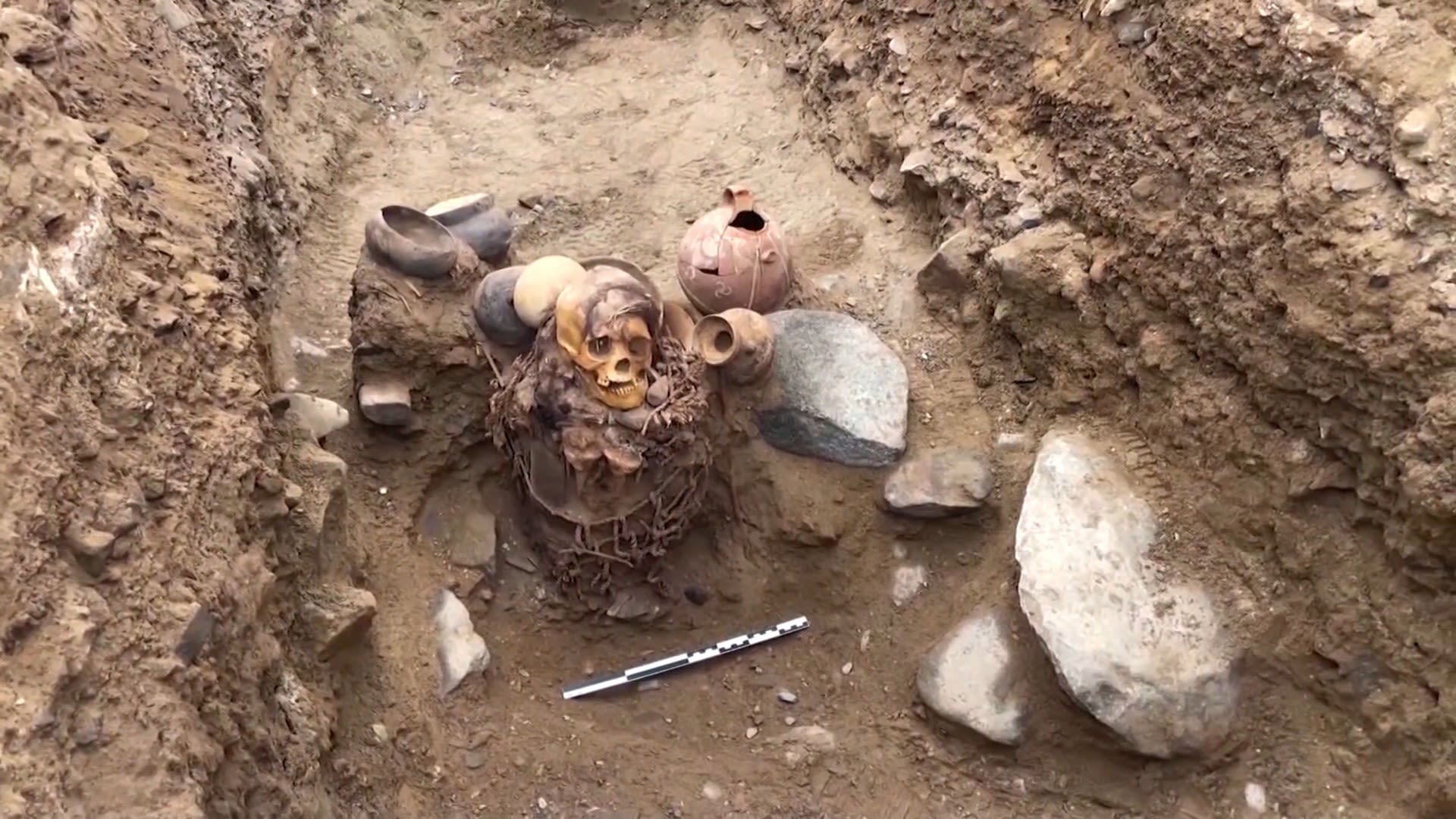The mummy, identified as a woman between 20 and 30 years old, was found only 50 centimeters deep, wrapped in vegetable fiber ropes and in a seated position, with her face covered by her hands. Nine ceramic vessels decorated in white, black and red were found next to her, as well as a plate with remains of crustaceans, suggesting a funerary context linked to a coastal society.
According to archaeologist Jose Aliaga, who leads the monitoring team of the Cálidda company, the mummy would belong to the Chancay culture, which flourished between 1100 and 1470 A.D. on the central coast of Peru. “This type of burials are characteristic of pre-Inca fishing societies that practiced complex rituals around death,” Aliaga explained to AP.
The finding forced to temporarily stop the infrastructure works, while the Ministry of Culture authorized the expansion of the excavation area. The Cálidda company, which has reported more than 2,200 archaeological finds in two decades of operations, reaffirmed its commitment to the protection of cultural heritage. “Every meter of Lima soil can contain centuries of history,” said Marcio Mayta, the company's archaeology coordinator.
Experts like Pieter Van Dalen, dean of the College of Archaeologists of Peru, emphasized that this type of mummies are usually preserved in a natural way thanks to the arid climate of the coast. “The remarkable thing is that even in urbanized areas, the past continues to emerge,” he said. The finding will be transferred to a conservation center for analysis and eventual public exhibition.

